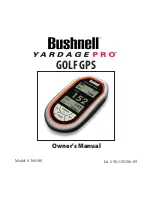
Smart Machine Smart Decision
If there is a high drop-out between the input and the desired output (VBAT), a DC-DC power supply will be
preferable because of its better efficiency especially with the 2A peak current in burst mode of the module. The
following figure is the reference circuit.
Figure 7: Reference circuit of the DC-DC power supply
The single 3.7V Li-ion cell battery can be connected to SIM800H VBAT pins directly. But the Ni-Cd or Ni-MH
battery must be used carefully, since their maximum voltage can rise over the absolute maximum voltage of the
module and damage it
When battery is used, the total impedance between battery and VBAT pins should be less than 150m
Ω
.
The following figure shows the VBAT voltage drop at the maximum power transmit phase, and the test condition
is as following:
VBAT=4.0V,
A VBAT bypass capacitor C
A
=100µF tantalum capacitor (ESR=0.7
Ω
),
Another VBAT bypass capacitor C
B
=1µF.
Figure 8: VBAT voltage drop during transmit burst
4.1.1.
Power supply pin
Pin 1 and Pin 42 are VBAT input, Pins 2,43,44,45 are GND of power supply, VRTC pin is power supply of the
RTC cicuit in the module.VDD_EXT output 2.8V when module is in normal operation mode.
When designing the power supply in user’s application, pay special attention to power losses. Ensure that the
input voltage never drops below 3.0V even when current consumption rises to 2A in the transmit burst. If the
power voltage drops below 3.0V, the module may be shut down automatically. The PCB traces from the VBAT
pins to the power supply must be wide enough (at least 60mil) to decrease voltage drops in the transmit burst.
The power IC and the bypass capacitor should be placed to the module as close as possible.
SIM800H_Hardware_Design_V1.01
22
2013-08-20
















































